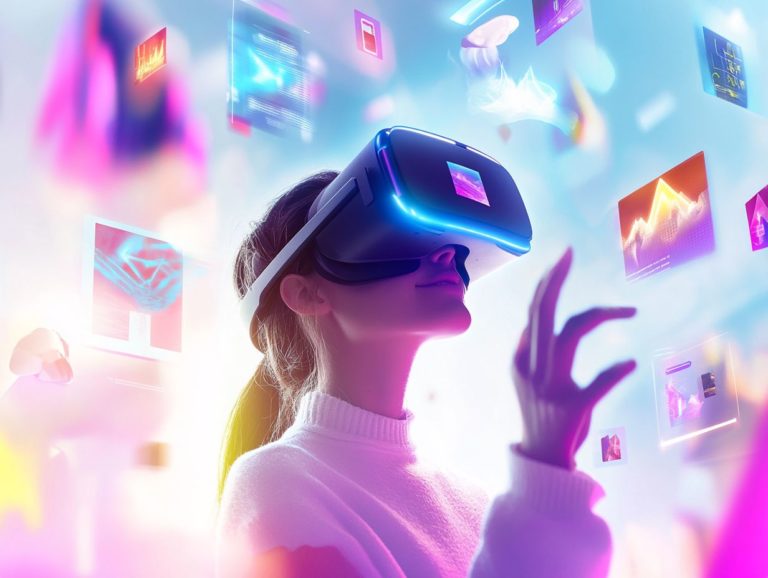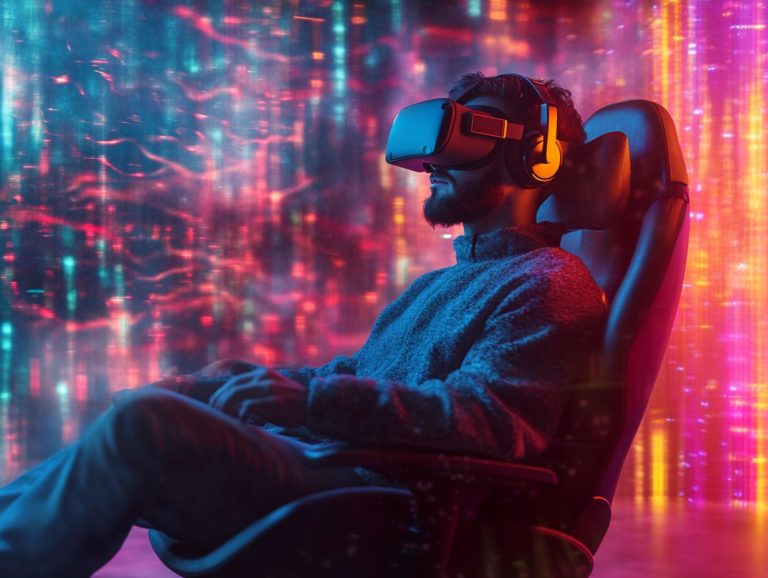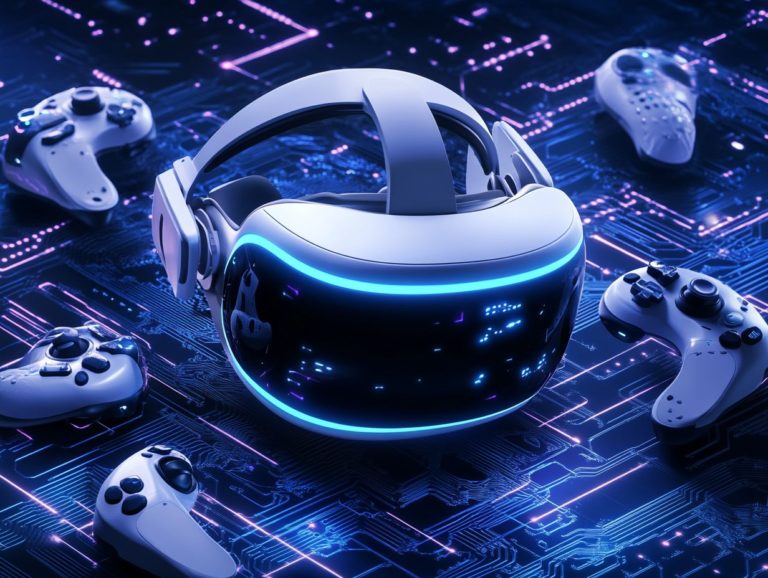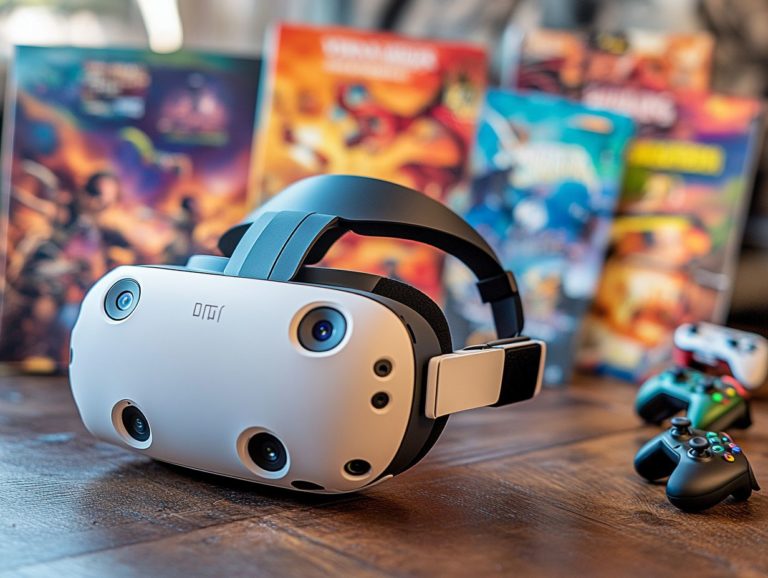how to optimize your vr setup for performance
Virtual reality (VR) opens up a realm of immersive experiences, but unlocking its full potential demands more than simply donning a headset.
Understanding the factors that influence VR performance is essential for achieving smooth gameplay and breathtaking visuals. You’ll learn calibration techniques, strategies for better graphics, and tips to reduce latency and motion sickness.
This article delves into the critical elements that shape your VR experience, from hardware requirements to software optimizations.
Troubleshoot common performance issues to enjoy your virtual adventures without interruption.
Get ready to transform your VR setup today!
Contents
- Key Takeaways:
- Understanding VR Performance
- Optimizing Your VR Setup
- Calibrating Your VR System
- Maximizing Graphics and Frame Rates
- Reducing Latency and Motion Sickness
- Troubleshooting Common Performance Issues
- Preguntas Frecuentes
- 1. C mo puedo optimizar mi configuraci n de VR para un mejor rendimiento?
- 2. Es importante tener una tarjeta gr fica potente para un rendimiento ptimo en VR?
- 3. Puedo mejorar el rendimiento de VR ajustando la configuraci n gr fica?
- 4. Hay algo m s que pueda hacer para optimizar mi configuraci n de VR para el rendimiento?
- 5. Actualizar mi CPU o RAM mejorar el rendimiento de VR?
- 6. Debo usar una conexi n por cable o inal mbrica para mi configuraci n de VR?
Key Takeaways:
- Understand the impact of hardware and software on VR performance.
- Ensure your system meets recommended specifications.
- Properly calibrate your VR system for the best experience.
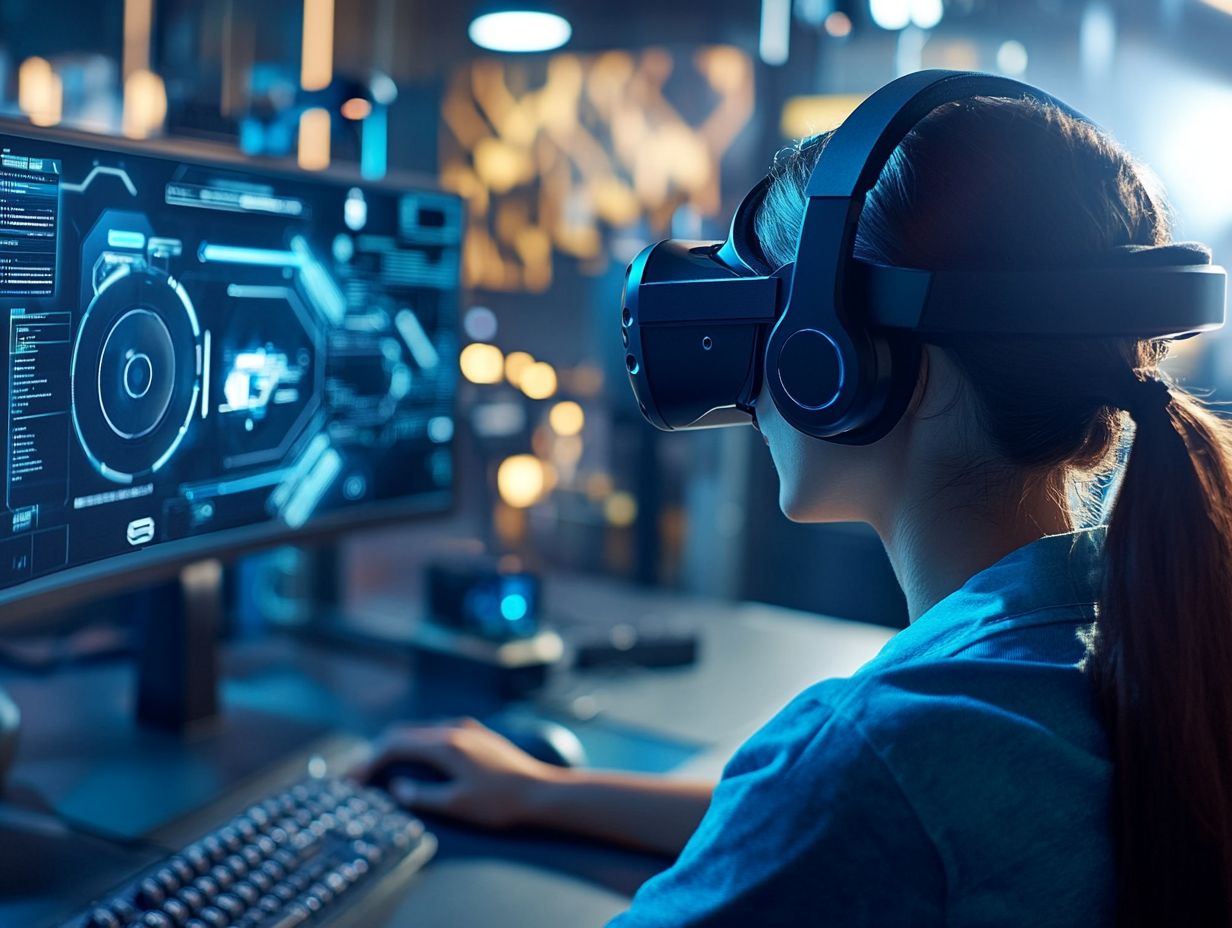
Understanding VR Performance
Grasping the details of VR performance is essential for elevating your gaming experience. It encompasses various factors that directly influence the smooth operation of virtual reality applications on platforms such as Windows Mixed Reality, Valve Index, and Oculus Rift.
A well-optimized setup enhances frame rates. It guarantees that you can immerse yourself in rich environments without the frustration of low frames, lag, or motion sickness.
This approach ultimately unlocks the full potential of your graphics card and system resources, ensuring that every gaming session is nothing short of exceptional.
Factors That Affect VR Performance
Several factors can greatly influence your VR performance, including the specifications of your graphics card, the availability of system resources, and any background processes that might be hogging precious memory and processing power.
These elements work together to either enhance or detract from your virtual reality experience. For example, a high-end graphics card with ample VRAM can render immersive environments in stunning detail, while a weak CPU may leave you struggling with lag or stuttering.
System resources are crucial; insufficient RAM or too many applications running simultaneously can make your VR experience feel less fluid.
Optimizing your software settings like adjusting refresh rates and resolution plays a significant role in how smoothly those virtual worlds operate, directly impacting your satisfaction and level of immersion.
Optimizing Your VR Setup
Optimizing your VR setup is crucial for achieving peak performance from your headsets, including Windows Mixed Reality, Valve Index, and Oculus Rift. This enhancement significantly elevates your gaming experience, allowing for smooth motion and high-resolution graphics that truly immerse you in virtual worlds.
Hardware Requirements
To achieve optimal VR performance, you must adhere to the hardware requirements outlined for your VR headset. This typically includes a powerful graphics card and a fast SSD to efficiently manage data flow.
A robust CPU is equally critical, as it handles complex computations and improves your experience by reducing lag. Adequate RAM also plays a significant role, allowing multiple applications to run concurrently without any hiccups.
For a truly seamless experience, consider investing in a high refresh rate monitor. This can significantly enhance your VR experience by reducing motion sickness and delivering smoother visuals.
Understanding the unique demands of different VR systems gives you the power to select the right components, making a remarkable difference in the immersion of your virtual adventures.
Software Adjustments
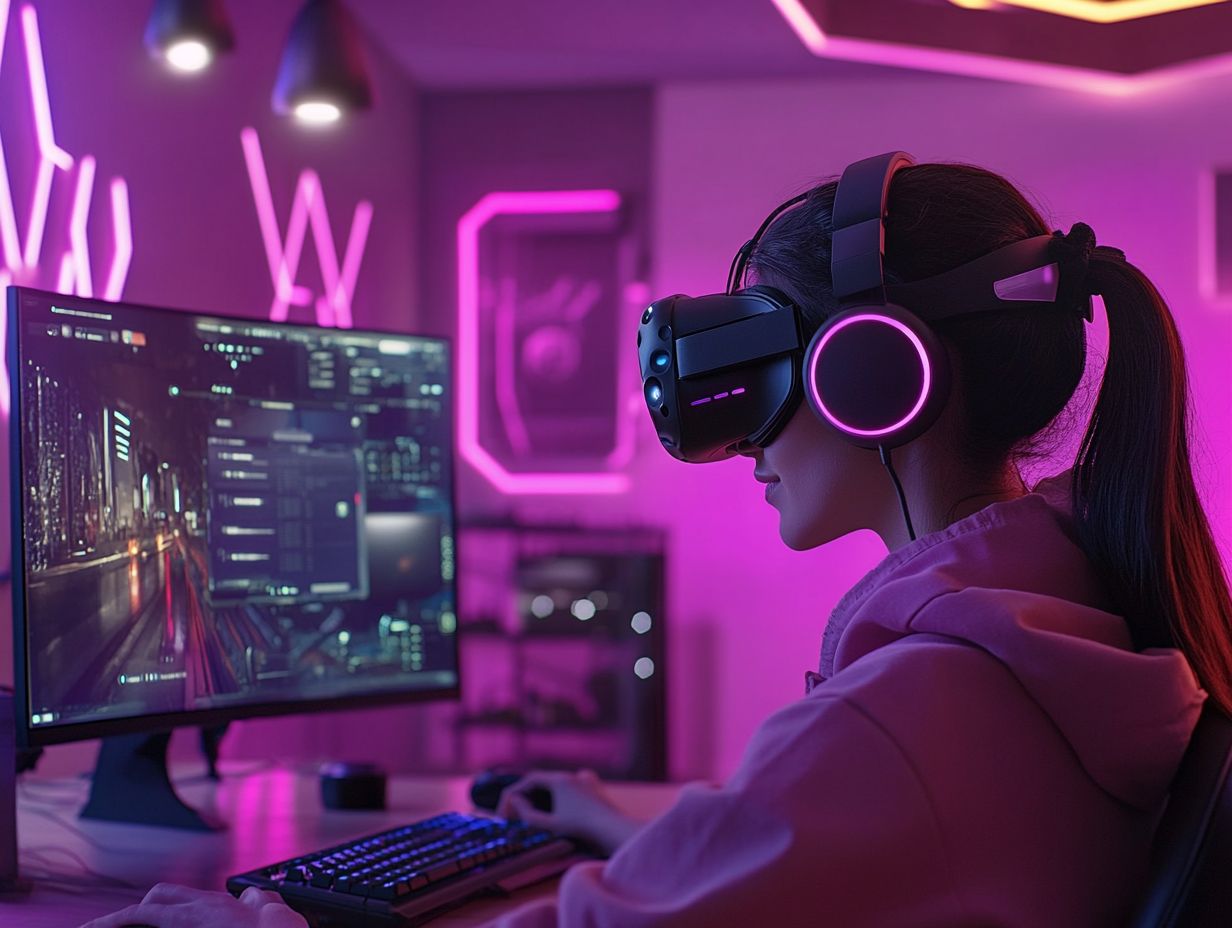
Making the right software adjustments is essential for optimizing your VR experience. Regularly updating drivers and fine-tuning graphics settings ensures your system runs smoothly.
Consider adjusting your power plan and virtual memory settings. Allocating enough memory can significantly boost performance during resource-intensive gaming sessions.
Exploring registry changes can unlock hidden potential in your software, leading to smoother frame rates and reduced latency.
Don’t overlook in-game options tailored to your VR headset. These can enhance clarity and responsiveness, making your journey enjoyable.
With these adjustments, your virtual space transforms into a seamless and captivating environment, elevating your gaming experience.
Calibrating Your VR System
Calibrating your VR system is crucial for accurate tracking and precision. This process impacts how well your headset responds to your movements.
Proper calibration creates a seamless experience, enhancing your interaction with the digital world.
Ensuring Proper Tracking and Calibration
To ensure accurate tracking, follow specific guidelines. Start by establishing a clear play area where you can move freely.
Identify and minimize obstructions that could interfere. Launch the headset’s calibration tool to fine-tune the sensors for optimal performance.
For tracking accuracy, move around your space and check if the headset follows your movements. Adjust the lens distance for a comfortable fit and reduce fatigue during longer sessions.
Maximizing Graphics and Frame Rates
Maximizing graphics and frame rates is vital for an immersive VR experience. Fine-tune your visual settings and lower the resolution if necessary.
Adjusting Visual Settings
Adjusting your graphics settings can enhance VR performance. Customize visual fidelity and lower the resolution to ensure smoother frame rates.
This can significantly improve your overall experience. Remember, different environments may require varying graphic settings, affecting frame rates.
Select settings that match your system s capabilities and your comfort level. This will deepen your immersion and minimize motion sickness.
Overclocking Your System
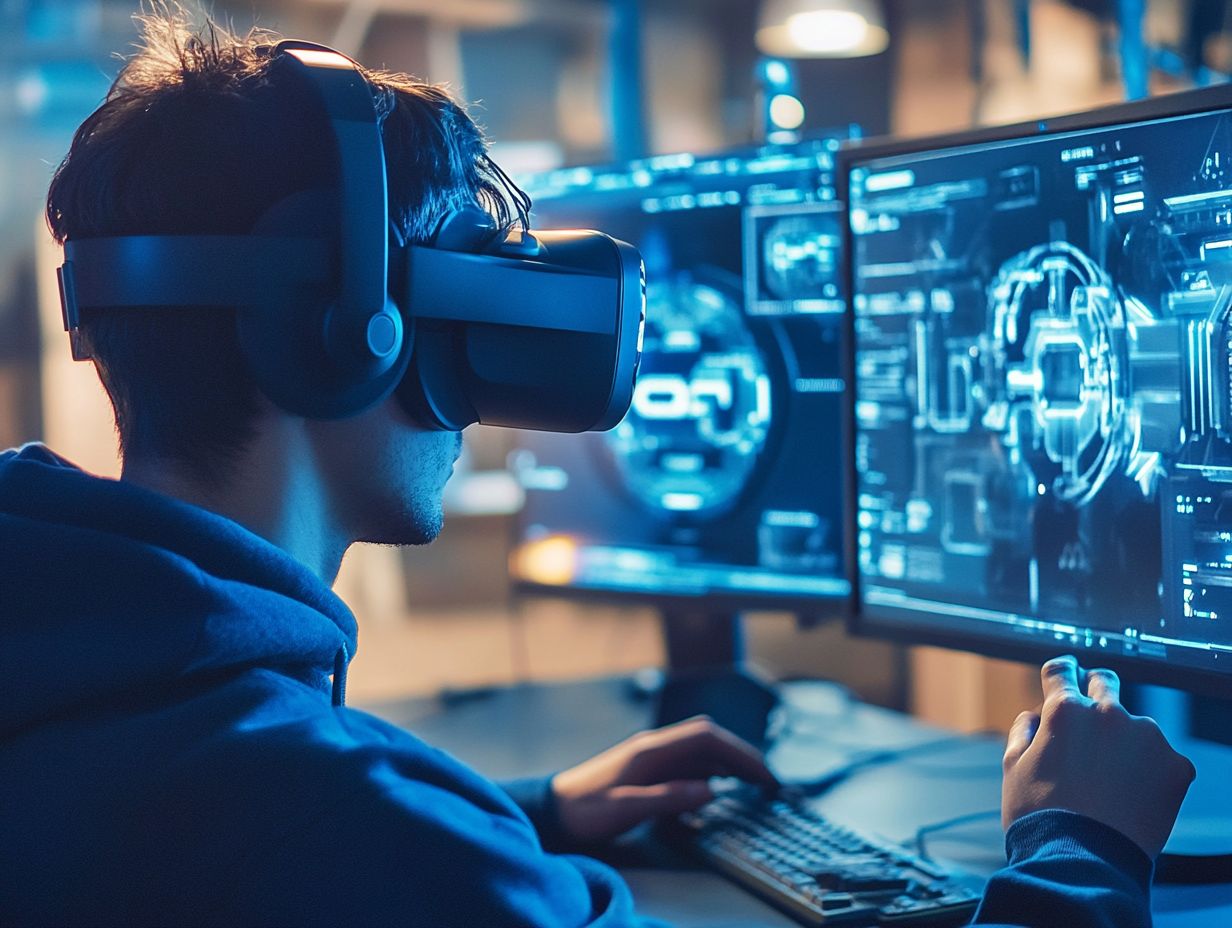
Overclocking your graphics card can greatly enhance performance. This leads to higher frame rates and smoother motion in VR.
Approach overclocking with caution; pushing hardware too far can cause overheating. Monitor temperature levels and use reliable software tools to achieve impressive gains safely.
Balance performance and safety through incremental increases and stability tests. Understanding voltage settings and cooling solutions can help you enjoy the benefits while minimizing risks.
Reducing Latency and Motion Sickness
Reducing latency and motion sickness is crucial for a truly enjoyable VR experience. High latency can result in discomfort. This undermines the immersive qualities that make VR gaming so captivating.
By addressing these issues, you can elevate your gaming experience to new heights.
Minimizing Delays and Discomfort
To minimize delays and discomfort while using VR, it’s essential to tackle both hardware and software issues. These issues might lead to latency and a less enjoyable gaming experience.
By closely examining various components such as headset quality, tracking systems, and the performance of connected devices you can pinpoint key areas for enhancement.
A lag in response times often stems from insufficient frame rates, which means the number of images shown per second, or sluggish processing speeds. Upgrading your hardware may be necessary.
You can also boost performance by optimizing software settings. Adjusting graphics parameters and ensuring compatibility with the latest updates can significantly enhance overall performance.
Incorporating regular rest breaks and familiarizing yourself with the virtual environment will further help reduce discomfort. This paves the way for a more immersive and enjoyable experience.
Troubleshooting Common Performance Issues
Troubleshooting common performance issues in VR can greatly elevate your overall experience.
By tackling problems such as low frame rates, lag, and software errors often caused by outdated drivers or system conflicts you can take steps to dive into an even smoother and more exciting virtual adventure!
Identifying and Addressing Problems
Identifying and addressing problems is essential for maintaining optimal VR performance. Particularly when faced with issues like frame drops or tracking inaccuracies, which can diminish your gaming experience.
Recognizing these challenges early can significantly boost your satisfaction and immersion. For example, frame drops are not just annoying; they can disrupt gameplay flow and even lead to motion sickness.
To tackle these concerns, review your hardware specifications to ensure compatibility and optimal settings for your specific VR headset.
Regularly checking for software updates can also help eliminate underlying bugs that might be causing frustrating performance dips. By implementing these targeted strategies, you can enjoy a more seamless and exhilarating virtual reality adventure.
Preguntas Frecuentes
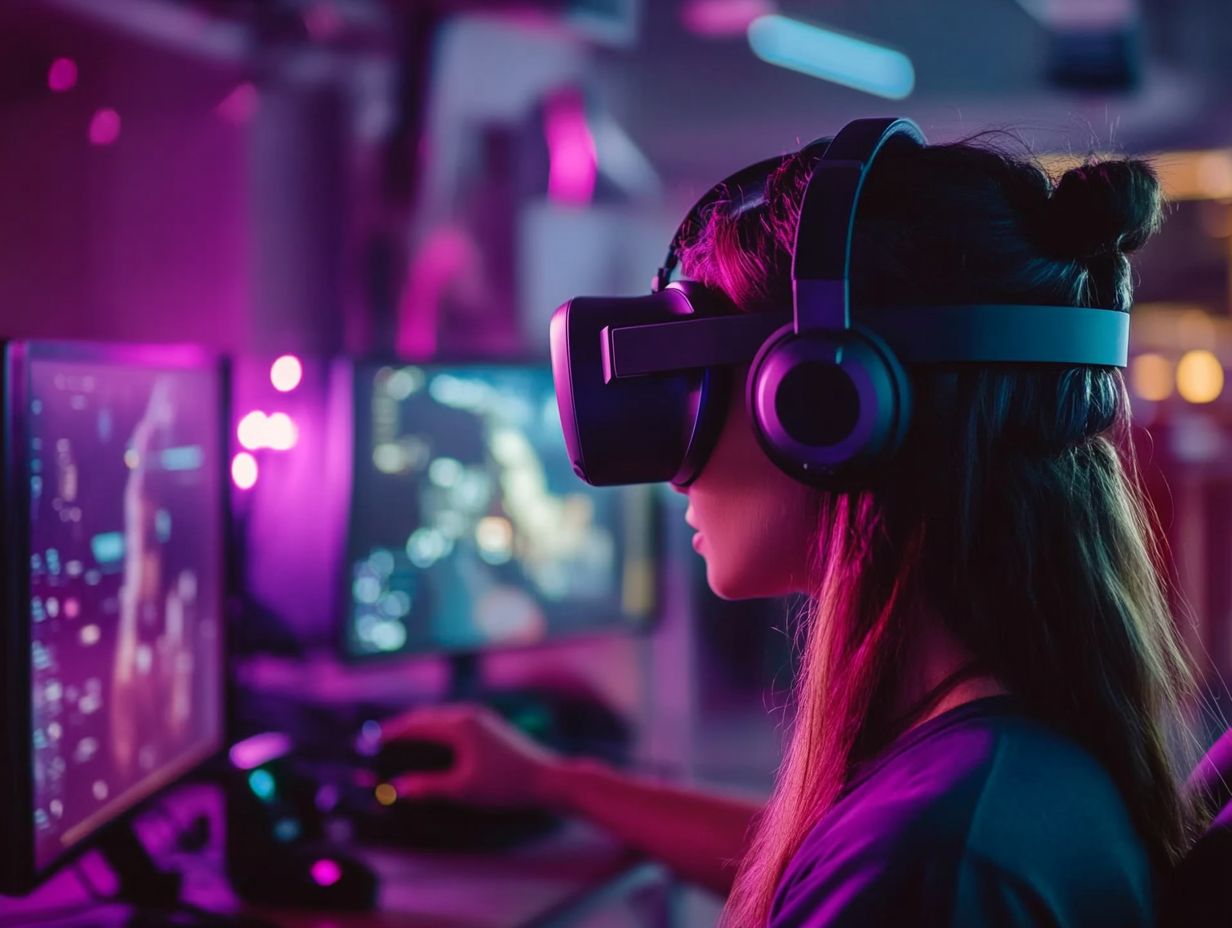
1. C mo puedo optimizar mi configuraci n de VR para un mejor rendimiento?
Para optimizar tu configuraci n de VR para el rendimiento, comienza actualizando los controladores de tu tarjeta gr fica. Aseg rate de que tu computadora cumpla con los requisitos m nimos para el visor de VR. Tambi n deber as cerrar cualquier programa en segundo plano innecesario y asignar m s recursos a tu juego de VR.
2. Es importante tener una tarjeta gr fica potente para un rendimiento ptimo en VR?
S , tener una tarjeta gr fica potente es crucial para un rendimiento ptimo en VR. Una tarjeta gr fica de alta gama es responsable de renderizar gr ficos de alta resoluci n y entornos 3D en VR. Tener una de gama baja puede resultar en retrasos y un rendimiento deficiente.
3. Puedo mejorar el rendimiento de VR ajustando la configuraci n gr fica?
S , ajustar la configuraci n gr fica en tu juego de VR puede mejorar significativamente el rendimiento. Reducir la resoluci n y desactivar el suavizado de bordes puede ayudar a reducir la carga en tu tarjeta gr fica y mejorar el rendimiento general.
4. Hay algo m s que pueda hacer para optimizar mi configuraci n de VR para el rendimiento?
Aparte de actualizar los controladores y ajustar la configuraci n gr fica, tambi n puedes intentar optimizar la configuraci n de energ a de tu computadora para un alto rendimiento. Adem s, aseg rate de mantener limpio y bien mantenido tu visor de VR y los controladores para un seguimiento y rendimiento ptimos.
5. Actualizar mi CPU o RAM mejorar el rendimiento de VR?
Actualizar tu CPU o RAM puede tener un impacto positivo en el rendimiento de VR. Esto es especialmente cierto si tu hardware actual est desactualizado o no cumple con los requisitos m nimos. Una CPU m s r pida puede ayudar con el renderizado, y m s RAM puede permitir un multitasking m s fluido.
6. Debo usar una conexi n por cable o inal mbrica para mi configuraci n de VR?
Si quieres disfrutar de la mejor experiencia en VR, elige una conexi n por cable. Esto asegura un rendimiento superior, ya que las conexiones por cable presentan menor latencia (el retraso en la transmisi n de datos) y mayor ancho de banda (la cantidad de datos que se pueden enviar al mismo tiempo).
Una conexi n estable y fluida har que tu experiencia de realidad virtual sea mucho m s emocionante. No te arriesgues a perderte en la inmersi n con una conexi n inal mbrica.

